Ancient Wedding Customs That Feel Like They’re A World Away
Whenever we look at the marriages of ancient times, it requires a big adjustment in how we look at the purpose of marriage. Although modern couples tend to see a marriage as a confirmation of their love, ancient couples tended to be married for political or social reasons.
Regardless of the reasons for marriages, however, every civilization has had its own customs for how marriages are performed and they took them all seriously. Some are bizarre while others almost seem cute, but they all were done according to specific rituals.
The Maasai People Of Africa Spit On The Bride
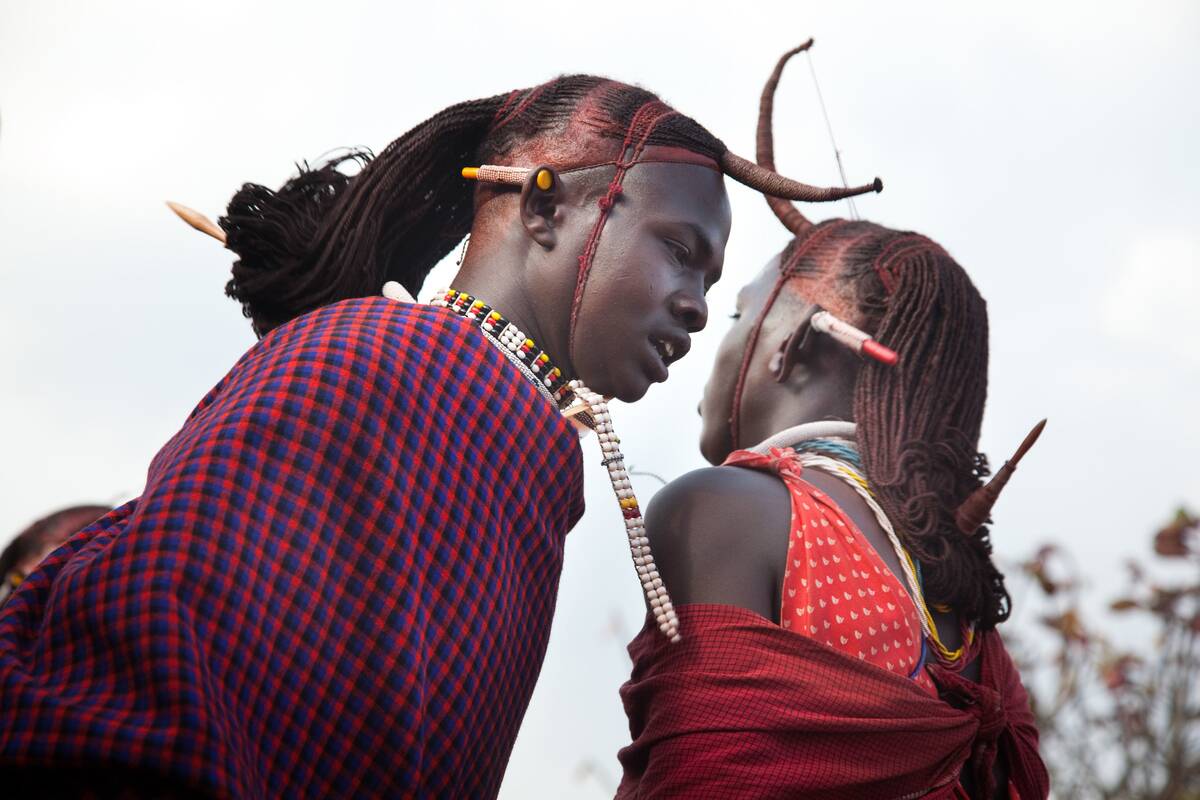
While larger civilizations will find their wedding traditions change over time, smaller tribes can put enough emphasis on tradition that the ancient practices of their people still carry forth into modern times. That’s the case for the traditions of the Maasai people, a semi-nomadic tribe found in Kenya and Tanzania.
According to Pulse Nigeria, an ancient tradition still practiced today sees a bride’s father spit on her head and chest soon before weddings take place. This is intended to pass on the family’s blessings, ward evil spirits away from the daughter, and embody a wish for prosperity and fertility. It may look unusual but it’s nonetheless meaningful.
Greek Marriages Involved A Bath, A Vase, And A Parade
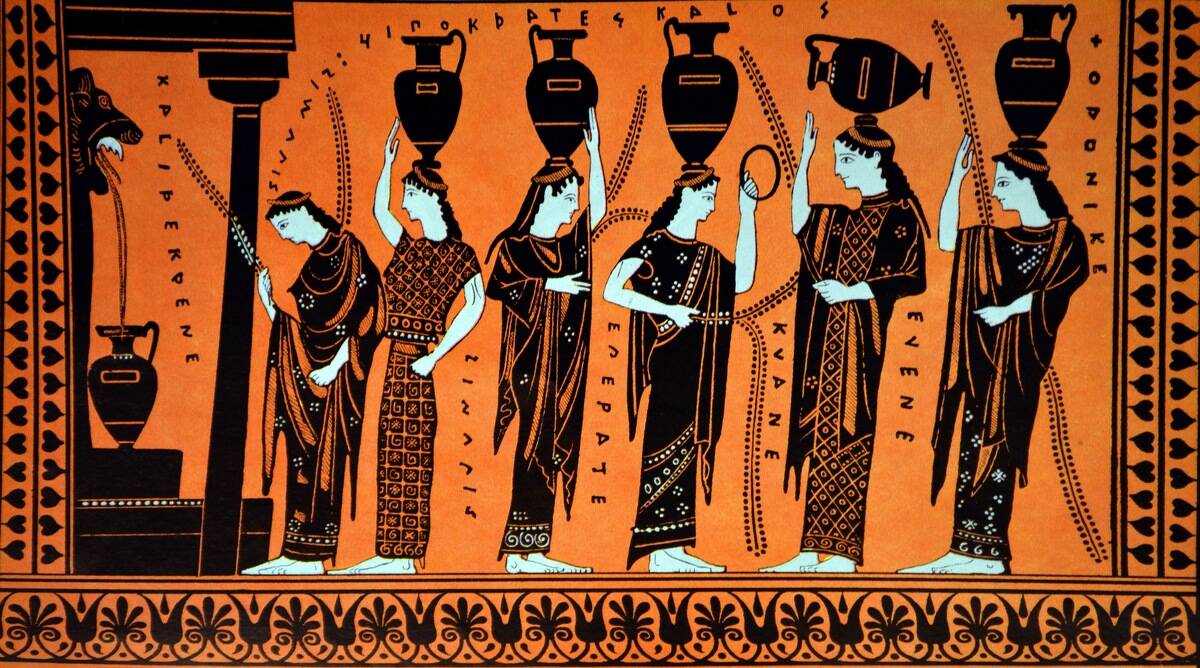
This depiction features what amounts to ancient Greek bridesmaids carrying water for the bride, and that water would have had a special use in ancient Athens. Granted, weddings occurred differently throughout ancient Greece, but Athenian tradition would certainly be influential, given the city’s size.
According to the Royal Ontario Museum, brides who lived 2,400 years ago would meet the husbands their fathers selected for the first time on their wedding nights, which were during a three-day ritual that began with the Proaulia, in which the bride transitions to adulthood. On the actual wedding, the bride is given a ritual bath and dressed in fine linens and jewelry before she and her groom are led by neighbors to the groom’s home. A vase called a lebes gamikos that depicts the nuptial images was given to the bride by the following day.
Ancient Egyptian Marriage Was Surprisingly Simple
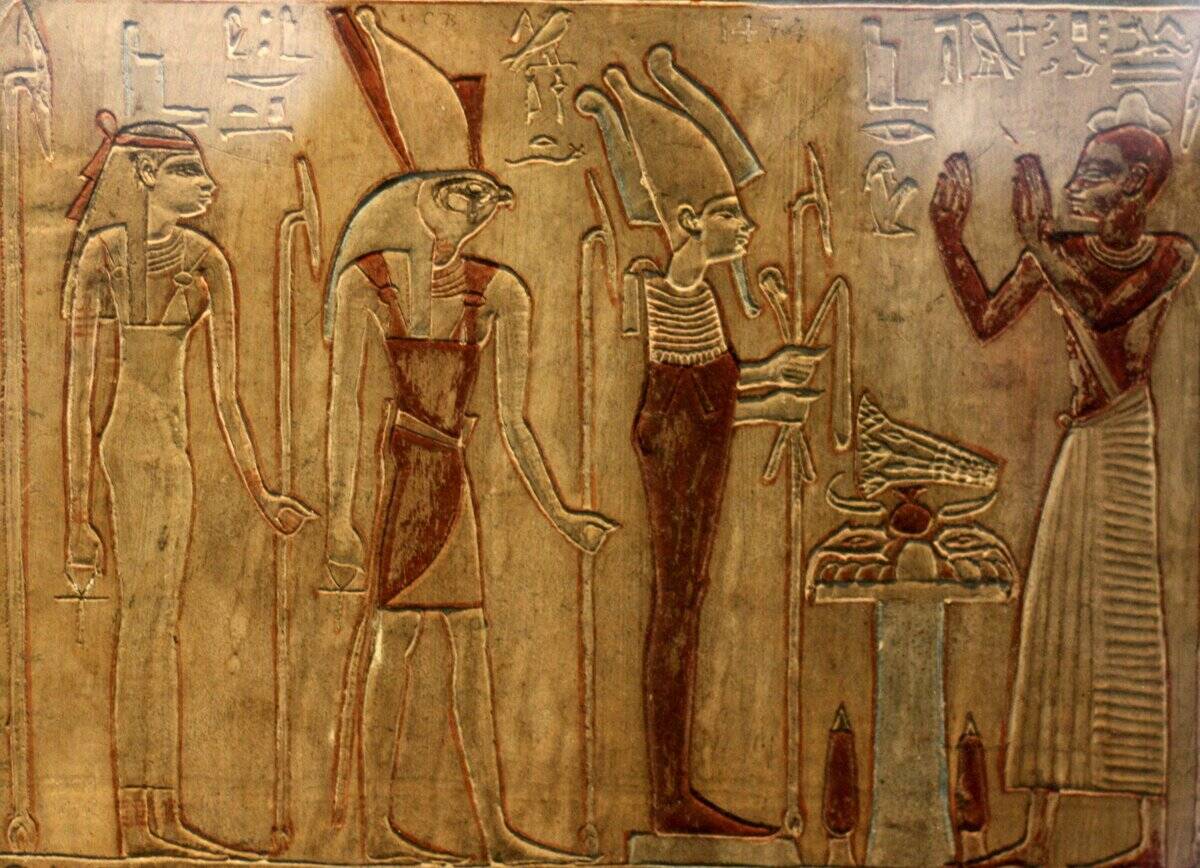
Despite how towering their monuments to their gods were and how complex their religious beliefs were, the ancient Egyptians tended to treat marriage fairly simply and unromantically. While arranged marriages did happen and people ideally married for life, the Carnegie Museum of Natural History noted that ancient Egyptians emphasized marrying for love and had fairly simple divorce procedures in place.
Despite these sophisticated, forward-thinking considerations, however, ancient Egyptian weddings weren’t steeped in grand rituals or grand celebrations. Instead, a woman just entered her husband’s home with the belongings they had agreed upon and the husband signed some paperwork. That was it. No wonder divorces happened about as easily.
The Items Were Everything To Ancient Japanese Weddings
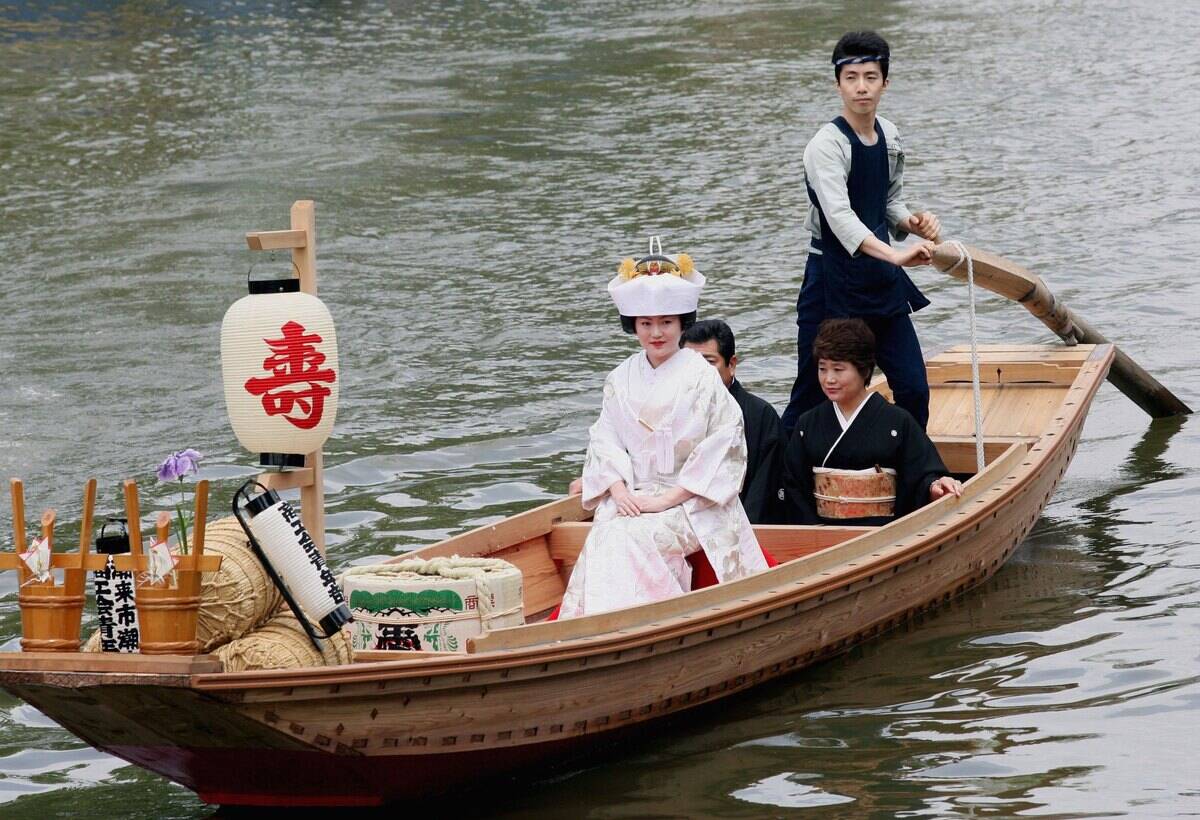
As Japan is a nation with a special emphasis on its ancient traditions, it’s not so uncommon for the trappings of ancient marriages to appear in modern ones. Indeed, this bride is wearing the same white kimono and horned headdress on the way to her wedding that others would have hundreds of years ago. However, what she’s hoping to get out of that marriage may be a little different.
From ancient times to the Edo Period of the 17th to 19th Centuries, Japanese marriages were explicit political alliances and means to achieve social status, rather than romantic affairs. As such, The Metropolitan Museum of Art noted that they emphasized the chest-loads of fine gowns and other expensive items called trousseaus to symbolize this alliance. The ceremony involved the bride changing kimonos after a ritual drink of sake, but the items she was to receive — an octagonal box holding 360 seashells being one of the most important — were the most fundamental aspects of a wedding.
Roman Weddings Had Traditional Scheduling
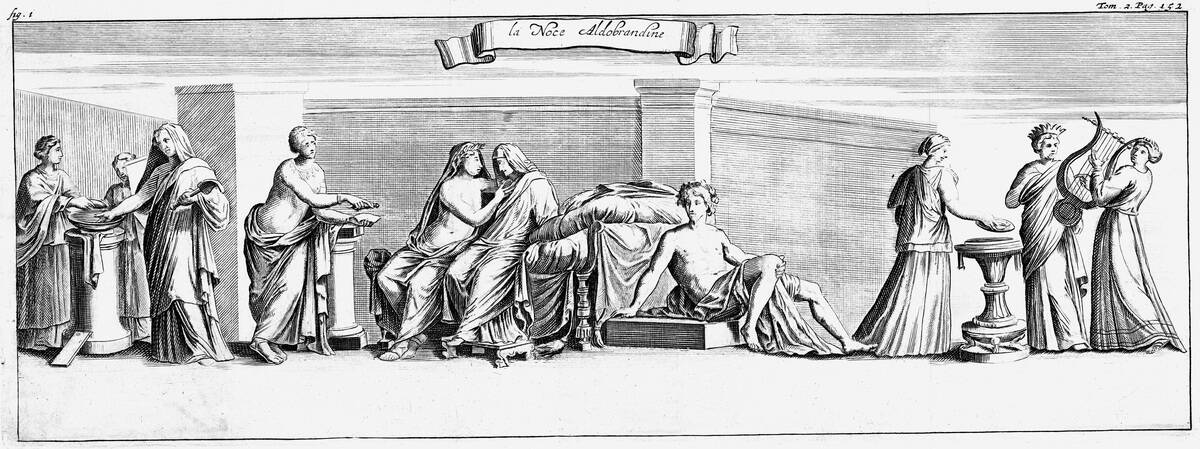
While the Romans were like many ancient civilizations in that marriages occurred for social and political reasons rather than romantic ones, traditions governed when couples could be married. According to PBS, June was considered a lucky month to be married, while the ides, nones, calends, and the day after the nones of each month were considered terribly bad luck.
The actual wedding itself was often considered a formality with the exchange of girfts and dowries, a written agreement, and a kiss to seal the bethrothal. Still, there were traditional trappings for the wedding day, including dressing the bride in a white woven tunic with a belt featuring the Knot of Hercules, an orange veil and orange shoes. There would also be a feast and a noisy procession leading the couple’s new home. Once there, the bride would be carried over the house’s threshold to ensure she doesn’t trip, as this would be bad luck.
Mesopotamian Brides Had No Say In Their Weddings

Although the families of many ancient civilizations arranged marriages without the bride’s input, Ohio State University noted that Mesopotamian marriages were privately arranged be the groom and his future father-in-law and predicated on the expectation of children. This agreement affected divorces, death benefits, and the ranking of a husband’s potential concubines below his wife.
As for the ceremony itself, the husband would veil his bride once her father delivered her and proclaim, “She is my wife.” He would then anoint her head with perfume and provide her with gifts and less fanciful supplies. These would be her children’s property, while another gift called a nudunnu would be hers even if the couple divorced. The only matter left to be settled was whether she would live at her father’s home or her husband’s, as the non-hosting party paid the other when this was decided.
Some Ancient Jewish Wedding Traditions Are Still Seen

Although this 15th Century depiction of a couple sharing a veil may look unusual, it speaks to a key aspect of a traditional Jewish wedding. While some traditions remain present in modern Jewish weddings — such as the breaking of the glass under the groom’s foot to memorialize the Second Temple of Jersusalem — others are more present in the past than today.
According to the UChicago Library, the cloth covering the couple in this depiction is actually a canopy called a chuppah, which is supposed to cover them both as they marry outside. Weddings are split into bethrothal ceremonies involving payment of a ring to the bride — or possibly a coin if they family were Sefardic Jews — and the wedding itself, which features a reading of a marriage contract called a ketubah. Prayers are said over two glasses of wine during the betrothal, and seven blessings are professed over the refilled glasses after the ketubah reading.
Whole Families Debated Before Traditional Māori Weddings
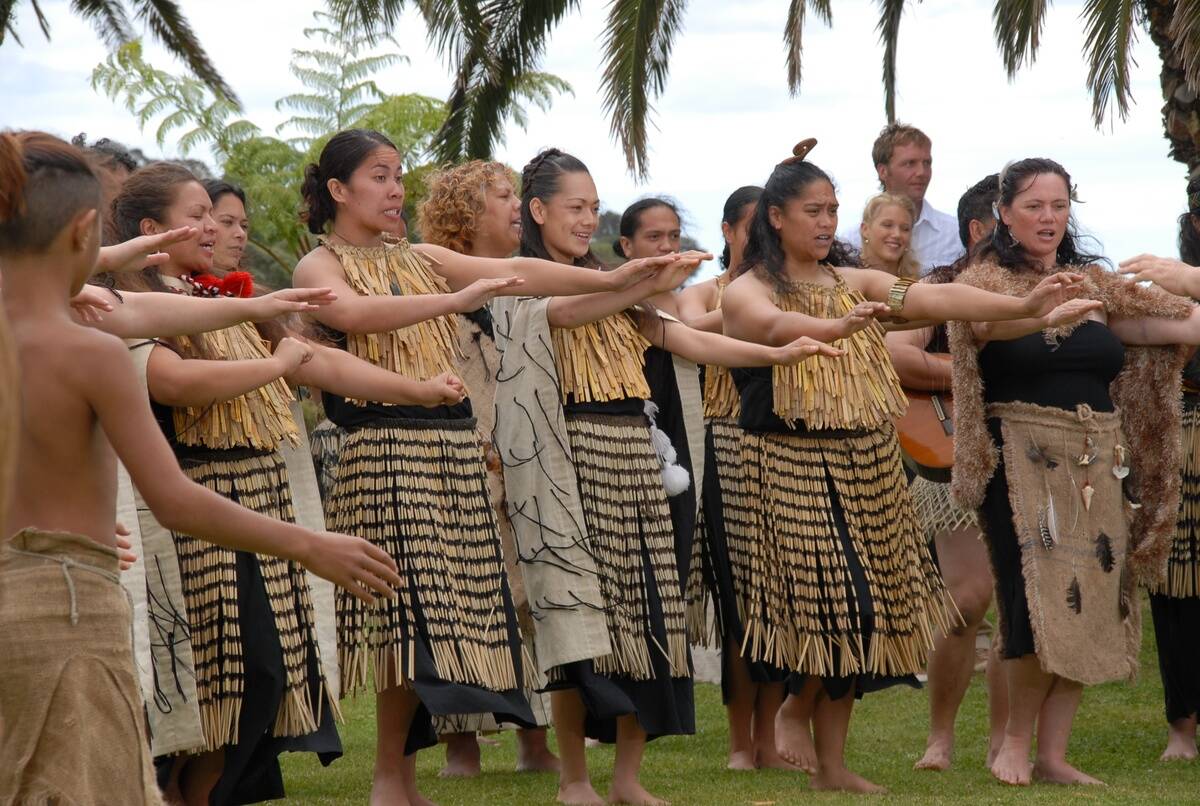
Although the The Encyclopedia of New Zealand noted that the Māori haven’t traditionally had specific marriage rites, the partners chosen for this marriage had to satisfy both the families involved and the tribal group the belong to. Marriages outside of the group were often discouraged — the exception being political marriages called Rangatira — and while marriages were often arranged by people’s families when they’re children, they could find their own partners if their family elders approved.
Due to how important marriages were to family and tribal units in Māori cultural history, extended families typically got together and vigorously debated the merits of a relationship before a marriage took place. As Wiremu Maihi Te Rangikāheke wrote, one man who was disapproved of by his beloved’s family put up everything his family owned in 1856 to try to sway them. It’s unclear how successful he was at this.
Celtic Marriages Were Not Always Monogamous

As University College Cork noted, ancient Celtic marriages tended to be simple, practical affairs that were legally more about which part of the couple brought the most property into the marriage (or whether they contributed equally) than any moral or religious tradition.
For that reason, LiveScience explained that it wasn’t unusual or taboo for women in these societies to take multiple husbands if she had the means to sustain those relationships. Indeed, this was one of the only things that Julius Caesar found noteworthy about the Celtic societies he eventually conquered.
Ancient Spartans “Kidnapped” Their Bald Brides

While large age gaps between teenage brides and older men were common in Athens, ancient Spartans waited until women were 18 to 20 before they were married to men of similar ages. According to Sky History, these men would ritually kidnap their brides and bring them home on their wedding night.
However, the young women were typically primed to expect this and shaved their heads in preparation. According to the History Channel, this was because Spartan men were not permitted to live with their wives until 30 and snuck away from their communal barracks at night to see their wives. The wives’ heads were shaved and they were dressed in boy’s clothing at weddings because their husbands were used to living with men all their lives.
Scotland Has The Most Unglamorous Wedding Tradition

Although this wedding tradition was typically seen in rural areas and is only limited to northern Scotland nowadays, it’s nonetheless true that the process of “blackening” a wedded couple is alive and well today. Although it was originally characterized as a ritual washing of feet capped off with a little light blackening, the tradition has since evolved into an intentionally disgusting mess.
According to the BBC, blackening involves the couple’s friends and family forcibly taking them and then dumping fish guts, rotten eggs, molasses, and even manure on them until they’re “blackened.” This behavior may be traditional, but local Scottish councils are understandably getting tired of cleaning the results up.
China Has Had “Ghost Weddings” For 3,000 Years
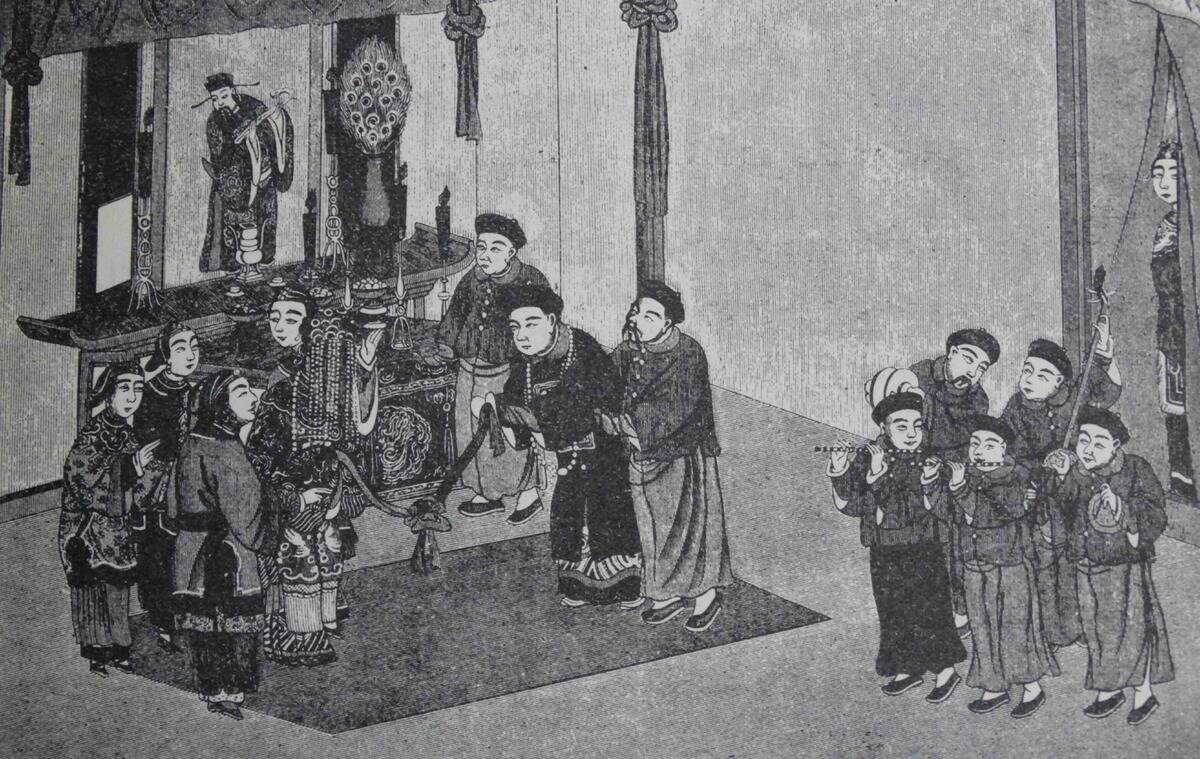
According to the BBC, a belief that’s persisted throughout China for the last 3,000 years — though it’s much more localized today — holds that the spirits of the dead are cursed if they go through the afterlife unmarried. This has compelled the families of single deceased people to hold “ghost weddings” where their children are posthumously joined in marriage.
Apparently, these ghost weddings has similar customs to weddings among the living, and the bride’s family can even demand bride prices while the groom’s family can demand dowries. The ceremony brings the couple’s funeral plaques together at a banquet, after which the bride’s bones are placed in the groom’s grave.
Traditional Indian Weddings Had Fire And Playing Children

While some traditions for India’s Hindu majority carry through today — as there’s typically a part where the groom leads the procession on horseback and marriages arranged by the couple’s family remain common — other aspects that were common in ancient aren’t quite as widely known.
If it seems that children can be as disruptive as they want during weddings, that’s because Southern Illinois University noted that the weddings of ancient India emphasized letting children play freely, as that makes the proceedings more joyful. While grand dowries and ornate, jewel-encrusted gowns for the brides were preferred when they could be afforded, grooms wore a red wool string on their wrists as they came to altars adorned with fragrant flowers and vegetable offerings, which were then burned on the altar during the ceremony.
Korean Weddings Still Involve Beating The Groom’s Feet
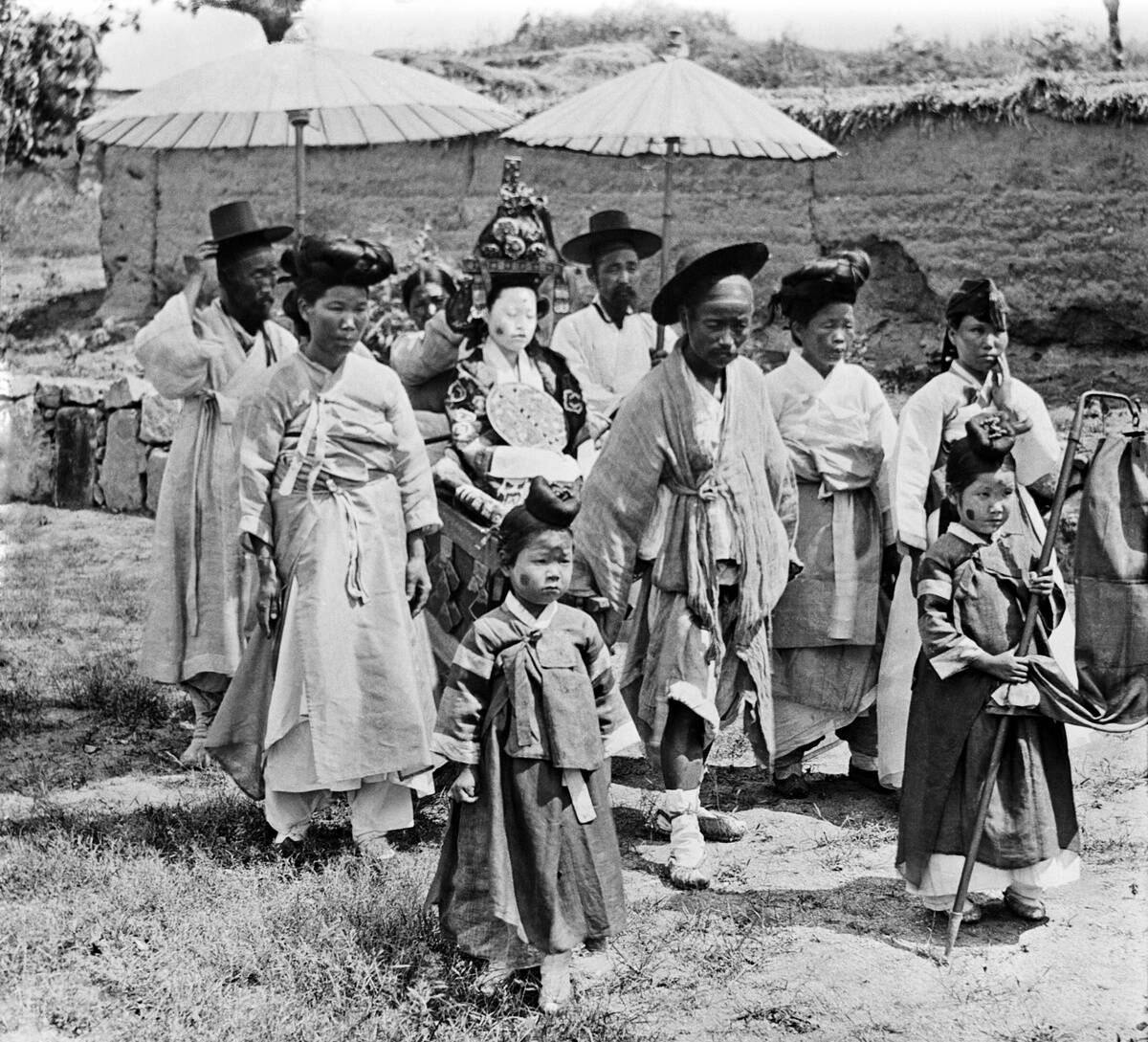
Although it’s unclear when this tradition started, Pulse Nigeria explained that a traditional South Korean wedding is likely to feature a part where the bride’s relatives hang the groom upside down, tie his ankles together with a white cloth, and flog his feet with a club.
The bride is supposed to plead with the men involved to stop, but they’re supposed to keep going while they ask the groom questions he’s expected to answer and the bride’s mother prepares food for them. The more people beat the groom’s feet, the better, as a lack of participants in this process indicate the poor reputation of either the groom or his family. It may not sound desirable, but it’s a bigger insult not to receive it.
Weddings Are As Serious As It Gets In The Congo

In most countries, it’s clear that something leading up to a wedding has gone seriously wrong if everyone is standing around with a serious, stoic expression on their face when they show up. In the Congo, however, that same awkward atmosphere traditionally means that everything’s going according to plan.
According to Vogue, the wedding couple is not allowed to smile or laugh while the wedding ceremony or even the wedding reception is going on. That’s also true of the guests, but it’s most important for the couple. Otherwise, it gives the impression that they aren’t serious about the marriage or the commitment ahead of them.



